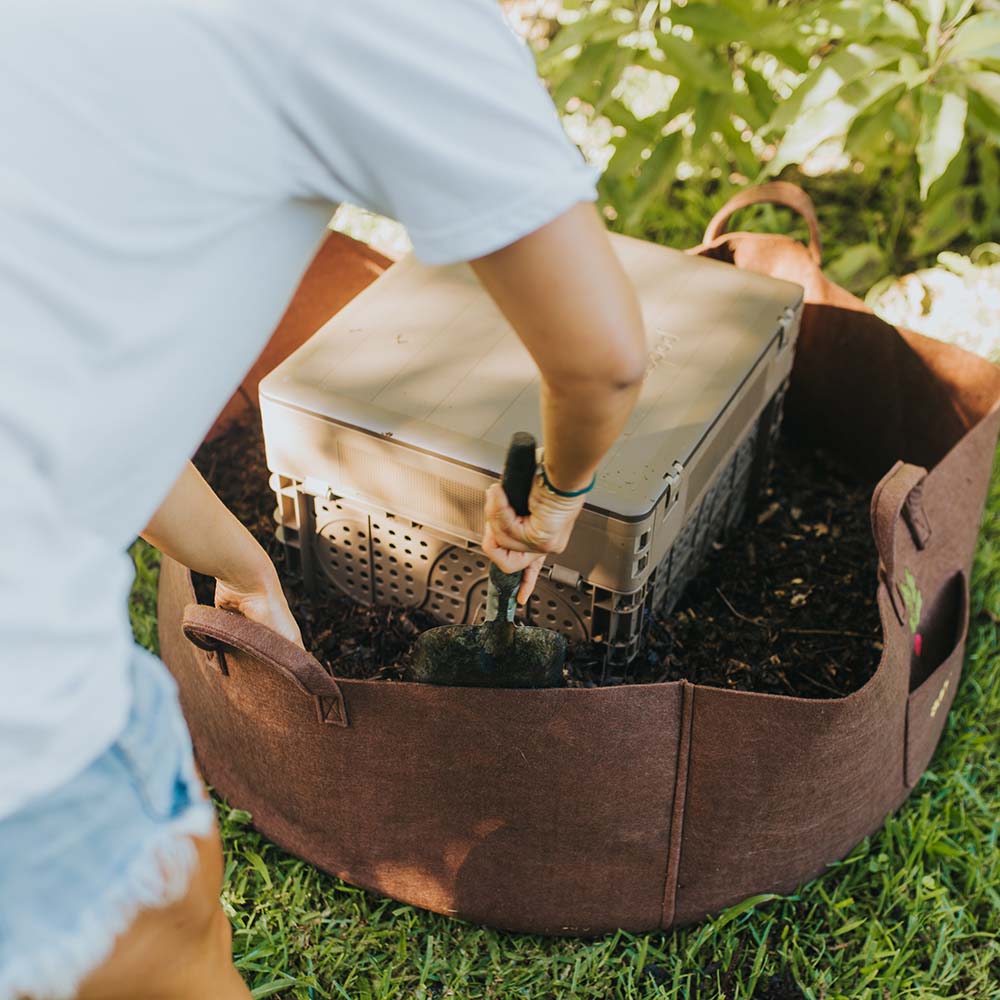New to worms, compost or both? Here’s a little worm 101 to get you ready for welcoming your new wriggly friends home! (Or to help you out with that science project...)
Compost worms vs. earthworms
There are lots of interesting scientific articles on this topic, but we’re going to simplify things: Compost worms are pretty similar to earthworms, they just have much larger appetites and eat a wider range of materials (like your food scraps).
And lucky they do, too! Their hungry little bellies are the reason Subpod is so good at breaking down food waste. We recommend either of these species for your Subpod:
- Tiger/Red Wriggler Worms (Eisenia fetida)
- Indian Blue Worms (Perionyx excqvatus)
When to order your worms
We suggest ordering your worms immediately after your Subpod arrives, especially if they’re going to take a few days in the mail. It’s always better to have a fully assembled Subpod ready to pop your worms straight into once they arrive. Otherwise, looking after compost worms can be tricky.
If you know you’ll install your Subpod the moment you get it, you can order your worms when your ‘Pod is on the way… At your own risk!
What to do if your worms arrive early
Oops! Did your worms arrive before your Subpod was set up? Don’t worry, you can still keep those wrigglers healthy and happy.
- Find a container (like a small bucket) with a lid to transfer your worms into.
- This container will needs to allow air in, so drill some small holes in the lid if needed.
- Place some dampened coconut coir in the container to act as bedding for your worms.
- Pop your worms on top of the bedding (along with everything that came in their container) and then place a damp worm blanket over top.
- Store the worms in a dark, room-temperature area of your house or garage.
That’s all a bit of a hassle though, so we really recommend getting your worms after your Subpod arrives – just to be safe.
Compost worms lay eggs
Yep, compost worms lay eggs. If you buy your worms online, you'll probably get a mixture of live mature worms and unhatched eggs. If you’ve got live worms in the mix, you won’t have to worry too much about hatching the eggs yourself, you can just add the whole bunch into the Subpod once it’s set up.
How to Get Your Subpod Worm Ready
If you choose to buy only eggs, your composting journey will be a bit slower. Hatching worm eggs can take some time, and it might be 2 - 3 months before you’re really able to feed your Subpod. So if you’re keen to get composting ASAP, reconsider buying eggs!
How to hatch compost worm eggs
Compost worm eggs have 2-5 baby worms inside, and will usually hatch within 6 - 8 weeks. But worm eggs can be a fickle, so if the weather is too hot or cold, you might end up waiting longer than that.
To hatch your eggs, place them into your Subpod with some damp coco coir bedding, and add in enough food scraps (mixed with carbon like paper) to cover them. Keep checking on your eggs every few days, and make sure your Subpod stays moist inside. Eventually, they’ll hatch and you can start composting!
Got any questions? Contact the team at hello@subpod.com and we’ll be able to give you all the wormy info you require.
Put your worm knowledge to use!
Check out our easy to use vermicompost systems.







Leave a comment
This site is protected by reCAPTCHA and the Google Privacy Policy and Terms of Service apply.